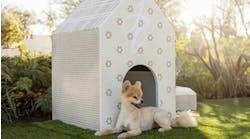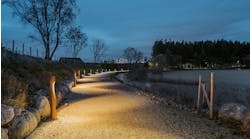It’s no secret: We’re all doing more with less these days, but I don’t think that’s necessarily a bad thing. I believe doing more with less can allow for the unleashing of your creativity. When a few elements are removed, we are often left with a more elegant and thoughtful solution.
Okay, okay, but what about in real life, when you’re being asked to do more with fewer people, less money and scarce materials? Here are some tips for making it work.
FEWER PEOPLE
If you’re like me, your teams are likely smaller these days, and may be populated with inexperienced designers or people with expertise in other market sectors. So how can you get everyone to function together smoothly?
Put Practices to Paper. A good starting point is the development of a best practices handbook or guide. This supports your work in two ways: first, it makes for more efficient work, as the team can reference the handbook before asking questions. Second, it will provide consistency in everything from drawing details to file naming. This common foundation is especially important if you have team members who shift in and out frequently.
Mentor Up. Consider creating a mentoring program where everyone has a mentor, regardless of experience level. We all need the occasional teacher or sounding board, especially in today’s economy, where things frequently feel upside down. Perhaps it’s the person with the 20-year career doing work they would have been managing in the past, or the designer with scads of hospitality experience approaching their first data center project. No matter how talented or experienced you may be, there is always more to learn.
LESS MONEY
A high level of competition has pushed project fees and budgets down across the board. So how can you keep the design from suffering while tightening your belt?
Ask Around. Engage different team members for internal design reviews with an emphasis on efficiency—consider experts from different firms, market sectors or even different fields altogether. An outside perspective may help find places where corners can be cut while maintaining quality design. One good resource for this is ANSI’s Integrative Process Standard, which works hand-in-hand with the American Institute of Architects’ Integrated Project Delivery guide.
Estimate early. One of the best ways to manage costs is to begin early! Engage a contractor or cost estimator to explore various design options as early as pre-schematics, and continuing throughout the project phases. Understand how to discuss the value of the different options with your clients and know their ROI expectations. Value Beyond Cost Savings from the Green Building Finance Consortium is a good place to start.
SCARCE MATERIALS
Two of the new material options proposed for LEED v4 involve recognition of historic preservation efforts and the expanded Life Cycle Assessment (LCA) of materials. Savvy designers can use these additions to their benefit when trying to maximize their use of materials.
Go older. A few of the pathways to compliance with the proposed LEED credit for Building Life-Cycle Impact Reduction include the use of historic buildings, or the renovation of abandoned or blighted buildings. Remember that gem of a building covered in graffiti next to your favorite coffee shop? It could have an inspired second life with your help.
Shop used. Many communities have organizations dedicated to selling inexpensive, reclaimed and reused building materials that might have otherwise ended up in the landfill. Here in Atlanta, the non-profit Lifecycle Building Center (www.lifecyclebuildingcenter.org) is reducing waste and promoting resource efficiency; see if this organization can support your efforts, or if there is another organization already operating in your area.
Holley Henderson, ASID, IIDA is a LEED Fellow and founder of H2 Ecodesign, a sustainability firm based in Atlanta, Ga. Henderson is also a well-known speaker and consultant, and the author of Becoming a Green Building Professional. H2 Ecodesign can be found at www.h2ecodesign.com.

